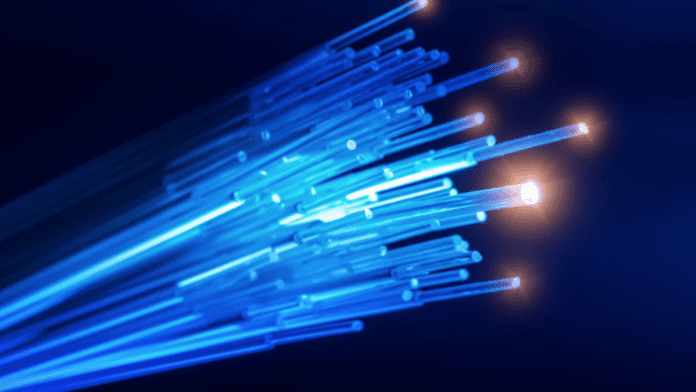Fiber infrastructure drives occupancy and lease prices
As deep fiber becomes to the go-to source of building connectivity and capacity, commercial office building owners will either have to invest in fiber or risk extinction, experts say.
Fiber-backed solutions inside of commercial office buildings enable wireless connectivity throughout for high-speed internet access, mobile services, IoT implementations and a range of other applications.?
Nearly $150 billion will be invested in fiber infrastructure in the next five years, according to a report by Deloitte.
Two factors are driving the unprecedented push for optical fiber connectivity: the emergence of an external environment embedded with optical fiber connectivity by network providers who are aiming to meet demands of mobility and cloud services for high-speed broadband capacity and increased use of digital (IoT) devices by businesses.
?The tenant demand for access to broadband, speed, and capacity is insatiable. We?ve never seen anything like it,? said Ron Scott, SVP of Strategy and Real Estate for Enterprise Network Solutions at ExteNet Systems, at the recent In-Building Tech?launch event in Dallas, Texas.
While the some tech investments may seem like an avoidable expense to building owners, industry experts say the availability of fiber infrastructure in commercial office buildings will determine whether they will survive or become obsolete.
?97% of commercial multi-tenant office buildings out there today are technologically obsolete because all the long-haul networks and metro loop carriers have all been replaced by fiber. The last choke point in the marketplace is your building,? Scott told the audience of commercial real estate executives and building operations officials.
As connectivity becomes an essential component of commercial office buildings, owners who are rapid to adopt these changes will not only differentiate their property but also improve net operating income (NOI) by providing a superior occupancy experience which promotes the retention of tenants and attracts new lessors.
?The tenant experience is what we are all about. The longer our tenants stay with us, the more revenue we can create. We want to offer tenants a climate control environment that is safe, and we want to remain behind the scenes,? said Billy Rowland, chief engineer of Bank of America Plaza in Dallas.
The state of the art building has deployed optical fiber to connect its building’s massive energy management, LED lighting and security systems. The security component consists of more than 148 cameras controlled by a single building management platform that can be remotely operated.
Rowland says the tangible benefits of having fiber already connected throughout the building go beyond offering efficient energy and building management platforms and provide an ?enhanced” ?tenant experience.
Reducing turnaround to six hours from the 120 days – the existing industry standard required to get a tenant in place in buildings without fiber connectivity- enables the leasing departments to rent building space much faster ultimately lowering vacancies and helping attract tenants who are willing to pay for connectivity.
?Newer tenants who themselves are from cutting-edge tech sectors want to utilize cutting-edge technology. They don?t want to go into a property that is doing things the old way. It just doesn?t look good for them and their business model,? Rowland said.
Meeting compliance standards of commercial building energy codes and regulatory requirements is also making fiber connectivity throughout office buildings a necessity. Compliance with net-zero energy codes in U.S. states like California requires a fiber infrastructure to manage on-demand lighting control and power sub-metering systems.
?We have been preparing ourselves for compliance issues and have glassed our entire building. We created a whole new trunk which will allow us to integrate power sub-metering, lighting integration and to position ourselves in the smart building and IoT space for the future,” said Tim Danz, chief engineer of The California Center a 50-story mixed-use high-rise in San Francisco’s financial district.
As building code preferences become mandates, they offer an opportunity for owners to monetize their brick and mortar as well as improve tenant experience, said Danz.
?Our team has tried to look ahead and anticipate challenges related to compliance and lifecycle replacement. These challenges came with opportunities to put in place infrastructure where we will see a revenue stream from carriers in the future,? said Danz.
Part of the enthusiasm surrounding deep fiber on the leasing side has been a shift from a piecemeal approach towards connectivity to instant connectivity, a convenience for clients which enables leasing teams to close deals faster, Danz said.
“We have 90%-plus occupancy. Our leasing team is falling all over themselves that we are fiber-ready,” Danz said.

